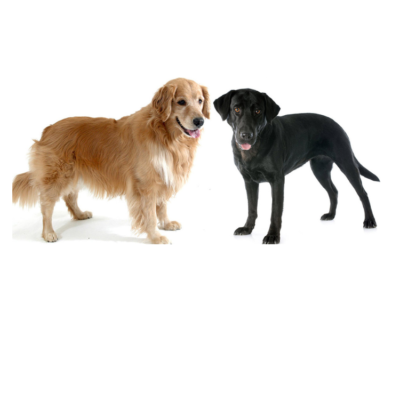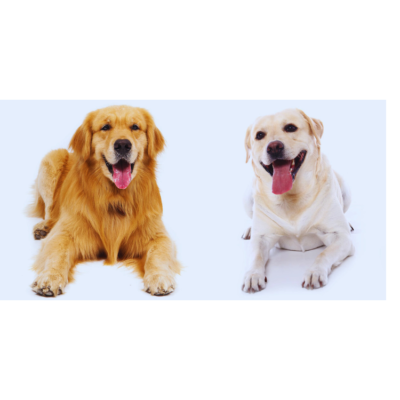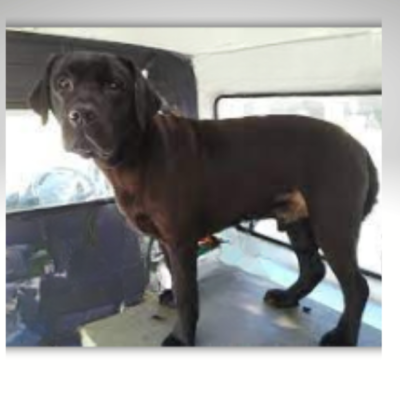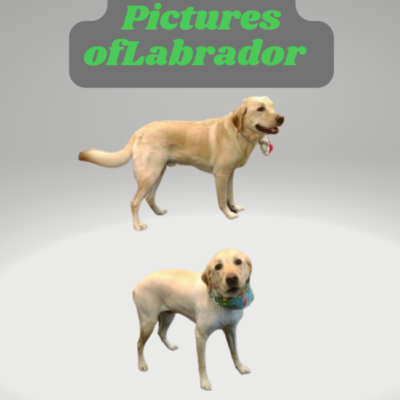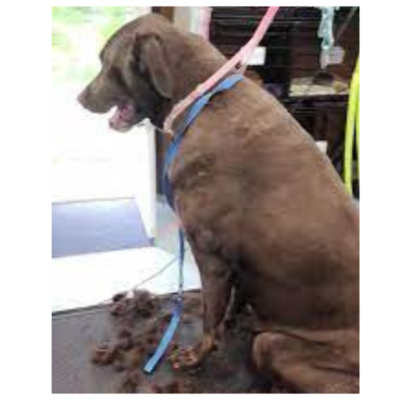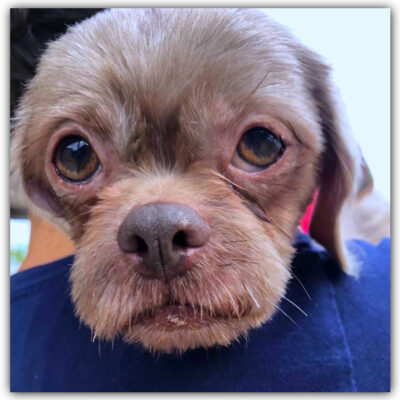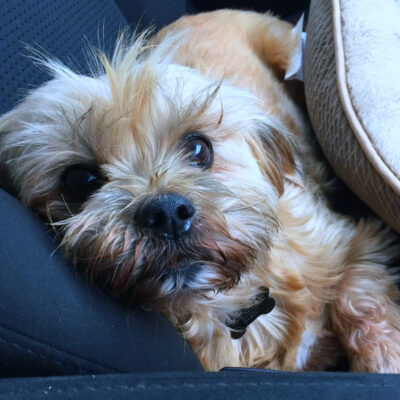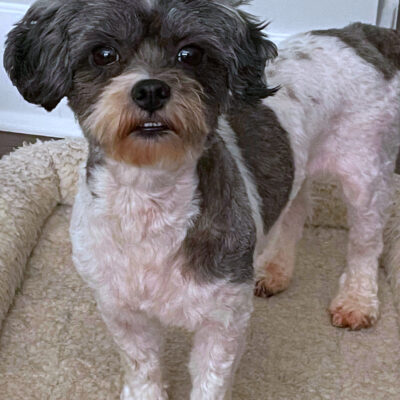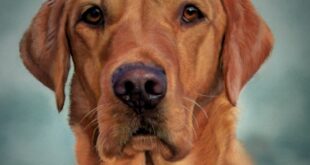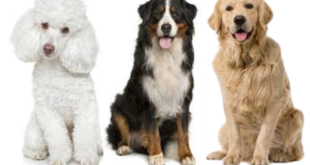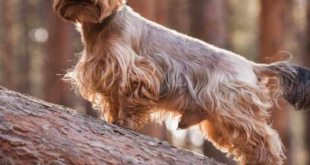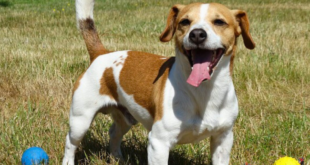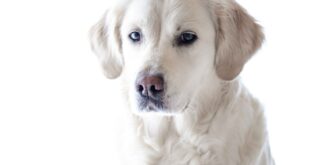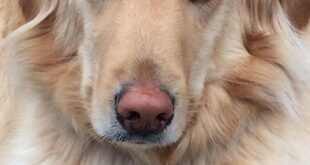Are you finding some queries about shave a Labrador, etc.? As you know, Labrador Retrievers are so popular due to their loyalty and double coat, which often leaves pet owners pondering an important question: Can I shave my Labrador Retriever?
The internet is rife with conflicting advice on this matter, but it’s essential to separate fact from fiction when considering the grooming needs of these beloved dogs.
The most interesting question from dog breeders is, Can you shave a Labrador retriever? While you technically can physically shave a Labrador Retriever, it’s generally not recommended for the reasons explained in the previous response.
Shaving a Labrador’s double coat can disrupt its natural functions and lead to potential health issues.
If you’re concerned about your Labrador’s comfort during hot weather, there are alternative methods to help them stay cool without resorting to shaving. Providing shade, ample water, and a well-ventilated environment are essential.
You can also consult with a professional groomer or veterinarian for advice on proper grooming techniques and products that can help manage your Labrador’s coat without causing harm.
In general, it’s best to approach grooming decisions for your Labrador with their well-being in mind, seeking guidance from experts who can provide informed and personalized recommendations. Shaving a labrador is an interesting art of fashion and care.
Understanding the Coat Before Shave a Labrador
The lab dogs sport a double coat comprising a dense, water-resistant outer layer and a soft, insulating undercoat. This coat serves as a natural protection against both cold and hot weather, making Labradors highly adaptable to various climates.
However, some pet owners might be tempted to shave their Labradors, thinking it will help them stay cooler during the warmer months. One of my friends has asked me if I can shave my lab? but I had no information about this topic, but I am covering it amzingly today.
How many Advantages of Shaving a Labrador retreiver?
Shaving a dog should be done thoughtfully and for specific reasons, as there are potential benefits and drawbacks to consider. Here are some potential benefits of shaving your dog:
- Managing Matting and Tangles: For dogs with long or dense coats that are prone to matting and tangles, shaving can be an effective way to prevent these issues. Removing severe mats can be uncomfortable for the dog, and shaving can provide a fresh start for their coat.
- Medical Procedures: In some cases, veterinarians might recommend shaving a specific area for medical reasons. This can allow for better access to the skin for treatment, surgery, or wound care.
- Hot Weather Comfort: Shaving can help keep certain breeds more comfortable during hot weather by reducing the thickness of their coat. However, it’s important to strike a balance to prevent sunburn and other skin issues.
- Hygiene and Parasite Control: Shaving certain areas, like the belly and the area around the genitals, can make it easier to keep the dog clean and control parasites like fleas and ticks.
- Allergies and Skin Conditions: Dogs with allergies, skin sensitivities, or skin conditions might benefit from shaving in specific cases where it’s recommended by a veterinarian. This can allow better access for topical treatments and aid in managing skin problems.
- Easier Maintenance: A shorter coat can be easier to maintain, especially for owners who might have limited time for grooming. However, regular brushing is still important for skin and coat health.
- Improved Comfort for Senior Dogs: Older dogs with mobility issues might have difficulty maintaining their own grooming. Shaving can help reduce the effort required for grooming and keep them comfortable.
- Specific Breeds or Circumstances: Some breeds, like Poodles and certain Terriers, are often groomed in specific ways that involve shaving for aesthetic or practical reasons.
Cons of Shave a Labrador
Contrary to popular belief, shaving a Labrador Retriever’s coat doesn’t necessarily keep them cooler. In fact, it can have unintended negative consequences for their overall health and comfort.
The Labrador’s coat acts as insulation, regulating body temperature and protecting the skin from harmful UV rays. Shaving this coat can lead to sunburn, increased vulnerability to skin infections, and an inability to regulate body temperature effectively.
Shaving a Labrador’s double coat disrupts its natural functionality and can result in a range of health issues. These include:
- Sunburn: Without the natural protection of their coat, Labradors are susceptible to painful sunburn, particularly those with lighter-colored coats or areas of exposed skin.
- Skin Irritations: Shaved coats can cause skin irritation, itchiness, and even hot spots. The removal of the protective outer layer can lead to increased sensitivity and potential skin problems.
- Coat Regrowth: Labradors’ coats might not grow back the same after being shaved. The new coat could be uneven, different in texture, and not provide the same level of protection as the original coat.
So after these disadvantages you have clarified, can you shave lab mix? etc.
What is proper grooming for Labrador retrievers?
How to groom a Labrador? While you shouldn’t shave your Labrador, proper grooming is still essential. Regular brushing helps remove loose fur, prevents matting, and promotes a healthy coat and skin. During shedding seasons, more frequent brushing can keep excess fur under control. Bathing should be done as needed using a dog-specific shampoo to maintain a clean and healthy coat.
Cooling Techniques
To help your Labrador stay cool during hot weather, provide plenty of fresh water, shade, and a well-ventilated living environment. Consider using cooling mats, providing access to a kiddie pool, or scheduling walks during cooler parts of the day.
Consult a professional.
If you’re unsure about how to care for your Labrador’s coat, it’s always a good idea to consult with a professional groomer or a veterinarian. They can provide guidance tailored to your dog’s specific needs, taking into account factors like their coat condition, health, and lifestyle.
Can you shave a Labrador in the summer?
Yes, you can physically shave a Labrador Retriever’s hair, but it’s important to be aware of the potential consequences and considerations before making this decision. It’s generally not recommended due to different reasons, as we mentioned above.
If you love your hairless labrador and are concerned about their comfort during the summer months, there are alternative ways to help them stay cool:
- Regular Brushing: Brushing your Labrador’s coat regularly helps to remove loose fur, prevent matting, and promote air circulation through their coat.
- Cooling Strategies: Provide plenty of shade, access to fresh water, and a cool environment. You can also use cooling mats, provide a shallow kiddie pool for them to cool off in, and take walks during the cooler parts of the day.
- Professional Grooming: If you feel that your Labrador’s coat is becoming excessively thick, consult a professional groomer. They can perform techniques such as “blowing out” the undercoat to help manage shedding and maintain coat health.
- Consult a Veterinarian or Groomer: If you’re uncertain about how to best care for your Labrador’s coat during the summer, consider seeking advice from a veterinarian or professional groomer who can provide guidance tailored to your dog’s specific needs.
Remember that the best approach to your Labrador’s grooming during the summer is one that takes into consideration their natural physiology and well-being. It’s always a good idea to prioritize their health and comfort over any cosmetic concerns.
Can you shave a Labrador to stop shedding?
Shaving a Labrador to stop shedding is a common misconception, but it’s important to understand that shaving a Labrador to prevent shedding may not yield the desired results and can even lead to other issues.
For the majority of dogs, shedding is a natural process that depends on a variety of factors, including genetics, seasonal changes, and health. Shaving a lab to reduce shedding is professional dog care you should know.
Here are a few reasons why shaving a Labrador to stop shedding might not be effective:
- Altered Coat Growth: Shaving a Labrador’s coat doesn’t necessarily stop shedding; it might change the way the coat grows back. The new coat might be uneven, differ in texture, and not provide the same level of protection as the original coat.
- Shedding Cycle: Shaving doesn’t alter the shedding cycle of a dog. Instead of the usual shedding of loose hairs, a shaved dog might experience more frequent and shorter hairs being shed, which can be even more challenging to manage.
- Balanced Diet: Feeding your Labrador a high-quality, balanced diet can support healthy skin and coat, potentially reducing excessive shedding.
- Misconception About Shedding: Shedding is a natural process for most dogs, and while regular grooming and brushing can help manage shedding, it’s impossible to completely eliminate it.
Is it OK to cut a lab’s hair?
Yes, it is generally okay to trim or cut a Labrador’s hair, but there are important considerations to keep in mind to ensure the health and well-being of your dog.
- Purpose: Before trimming your Labrador’s hair, consider the reason behind it. Common reasons include managing the length of the coat, preventing matting, and ensuring your dog’s comfort.
- Type of Cut: If you’re interested in a trim, opt for a light trim that doesn’t remove the entire coat. Trimming the hair rather than shaving allows for some level of protection and temperature regulation to be maintained.
- Professional Groomer: If you’re unsure about how to trim your Labrador’s hair, it’s a good idea to consult a professional groomer. They have the expertise to give your dog a suitable trim while avoiding potential issues.
Pictures of shaved Labradors
We have listed below some shaved Labrador retriever pictures. You can enjoy these different coat colours of fully shaved Labradors.
Shaved black Labrador retriever
Shaved chocolate Labrador
Shave a golden retriever
How many are the best labrador shedding solutions for dog fans?
Dealing with Labrador shedding can be a challenge, but there are several effective solutions and strategies to manage it. While you can’t completely stop shedding, you can significantly reduce the amount of loose fur around your home by following these tips:
- Healthy Diet: Ensure your Labrador is on a balanced and nutritionally appropriate diet. A healthy diet can contribute to a healthier coat and potentially reduce excessive shedding.
- Grooming Tools: Invest in grooming tools such as a deshedding rake or an undercoat brush. These tools can help remove the loose undercoat without damaging the top coat.
- Bathing: Regular baths using a dog-specific shampoo can help remove loose fur and keep the coat healthy. However, avoid excessive bathing, as it can dry out the skin and lead to increased shedding.
- Professional Grooming: Schedule regular appointments with a professional groomer who can perform techniques such as blow-out grooming. This process helps remove the loose undercoat and reduces shedding.
- Supplements: Some supplements, such as omega-3 fatty acids, can help improve coat health and reduce shedding. Consult your veterinarian before adding any supplements to your dog’s diet.
- Keep hydrated: Proper hydration supports your Labrador’s skin health, which in turn can help minimize shedding.
- Environmental Control: Regularly vacuum and clean your living spaces to minimize the presence of loose fur. Consider using furniture covers that are easy to clean.
- Seasonal Changes: Labradors tend to shed more during seasonal changes. Increase your grooming efforts during these periods to stay ahead of shedding.
- Consult a veterinarian: If you notice a sudden increase in shedding or other changes in your dog’s coat, consult a veterinarian. Excessive shedding can sometimes be a sign of an underlying health issue.
We hope these tips are helpful for you if you don’t like Labradors without fur.
Does shave a dog help with fleas?
should i shave my dog if he has fleas? Shaving a dog as a method to prevent or control fleas is generally not recommended and may not be an effective solution. Fleas can infest any part of a dog’s body, including the skin, regardless of the length of their coat.
Shaving your dog’s coat very short can lead to a variety of unintended consequences and potential health issues.
Here’s why shaving your dog for flea control is not advisable:
- Incomplete Protection: Fleas can still infest areas with little or no hair, such as the groyne, armpits, and ears. Shaving the coat doesn’t necessarily prevent fleas from finding places to hide and bite your dog.
- Temperature Regulation: Dogs’ coats also help regulate body temperature, and shaving can disrupt their ability to keep warm in cooler weather or cool down in warmer weather.
- Insect Bites: Shaved skin can be more vulnerable to insect bites and environmental irritants.
- Regrowth Issues: After shaving, the hair might not grow back evenly, which can lead to an uneven appearance and potential coat health issues.
Instead of shaving, here are more effective ways to manage and prevent fleas on your dog:
- Regular Grooming: Regular brushing and grooming help you detect fleas or signs of infestation early, allowing for prompt treatment.
- Flea Prevention Products: Use veterinarian-approved flea prevention products, such as topical treatments, oral medications, collars, or sprays. These products are designed to target fleas at various stages of their life cycle.
- Environmental Control: Keep your living environment clean by vacuuming regularly, washing your dog’s bedding, and using flea treatments for your home and yard.
- Regular Health Checks: Regularly examine your dog’s coat and skin for any signs of fleas, such as itching, redness, or visible fleas or flea dirt (small black specks that resemble ground pepper).
The shedding level of a Labrador can vary from dog to dog, even within the same litter. However, Labradors are generally considered high shedders due to their double coat. Regular grooming, including brushing, can help manage shedding and keep loose fur under control.
Is Labrador shedding seasonal?
Labrador Retrievers typically experience two main shedding seasons each year, commonly referred to as “coat blowouts.” These shedding seasons coincide with the changing of the seasons and the adaptation of their coats to temperature changes. The shedding seasons for Labradors are:
- Spring Shedding: This shedding season usually occurs in the spring as the weather warms up and the days become longer. Labradors shed their thick winter coat in preparation for the warmer months. During this time, you can expect to see more loose fur and shedding of the undercoat.
- Fall Shedding: The fall shedding season occurs as the weather starts to cool down and daylight hours shorten. Labradors shed their lighter summer coat in favor of growing a thicker winter coat. Similar to spring shedding, fall shedding involves the loss of the summer coat’s undercoat.
It’s important to note that while these are the primary shedding seasons for Labradors, shedding can occur to some extent throughout the entire year. However, the shedding during these specific seasons tends to be more noticeable and significant.
During shedding seasons, regular grooming practices like brushing become particularly important. Regular brushing helps remove loose fur, prevent matting, and promote a healthy coat. Additionally, maintaining a balanced diet, providing proper hydration, and addressing any skin or coat issues promptly can help manage shedding and ensure your Labrador’s coat remains in good condition.
Keep in mind that shedding is a natural process for Labradors and many other dog breeds. While you can manage shedding to some extent, it’s impossible to completely eliminate it. If you’re concerned about your Labrador’s shedding or notice any unusual changes in their coat, consult a veterinarian for guidance.
Can shave a Labrador hurt them?
Yes, shaving a dog can potentially hurt them if not done correctly or if the dog’s coat is shaved too closely. Shaving a dog’s coat comes with several risks and considerations that should be taken into account.
it’s generally safer to leave shaving to professionals who are trained to do it properly and safely. Always prioritize your dog’s well-being and consult experts when making grooming decisions.
Can you shave a Labradoodle mix?
Shaving a Labradoodle, which is a crossbreed between a Labrador Retriever and a Poodle, comes with its own set of considerations. Labradoodles often have curly or wavy coats that can vary in texture and thickness.
Dog with head shaved
half shaved dog
shave dog toy
How to shave a Labrador with human clippers?
Using human clippers to shave a dog is not recommended for several reasons. Human clippers are not designed for the texture, thickness, and grooming needs of a dog’s coat.
Dog clippers are specifically designed with the necessary power and blade types to effectively and safely groom a dog’s coat.
Using human clippers on a dog’s coat can lead to several issues:
- Ineffective Grooming: Human clippers are not designed to handle the density and texture of a dog’s coat. They might struggle to cut through the fur properly, resulting in an uneven or incomplete cut.
- Injury Risk: Human clippers might cause discomfort or even injury to a dog’s skin due to the lack of proper blade design and cutting power.
- Overheating: Dog clippers have specialized features to prevent overheating, as grooming sessions can be lengthy. Human clippers might overheat during extended use on a dog’s thicker coat.
- Blade Dullness: A dog’s coat can quickly dull human clipper blades, making the clippers less effective and requiring frequent blade changes.
- Skin Irritation: Human clippers might cause skin irritation, nicks, and cuts due to the differences in skin sensitivity between humans and dogs.
Labrador before and after grooming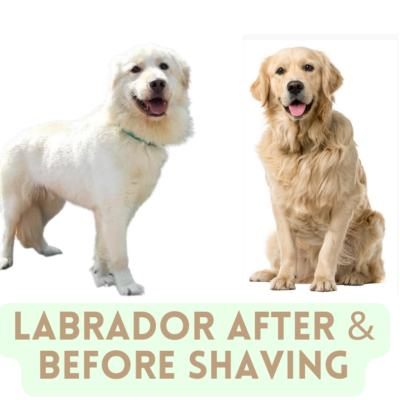
If you’re considering grooming your dog at home, it’s highly recommended to invest in proper dog clippers designed for their coat type and needs. Using the correct tools ensures your dog’s safety and comfort during grooming sessions.
If you’re unsure about how to groom your dog or use dog clippers, consider consulting a professional groomer for guidance or having your dog professionally groomed to avoid potential issues.
shaved yellow lab
Why shouldn’t you shave a double coated dog?
Shaving a double-coated dog, such as a breed with a thick undercoat like the Siberian Husky, Golden Retriever, or Australian Shepherd, comes with several potential risks and drawbacks. Double coats serve important functions for these breeds, and shaving can disrupt these functions, leading to various issues.
If you have any doubts or questions about grooming your double-coated dog, it’s advisable to consult a professional groomer or a veterinarian who can provide guidance tailored to your dog’s specific needs.
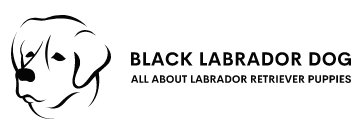 Black Labrador Dog All about Labrador retriever dogs
Black Labrador Dog All about Labrador retriever dogs
